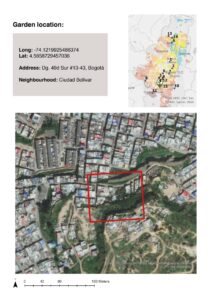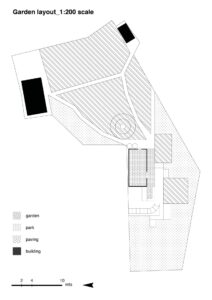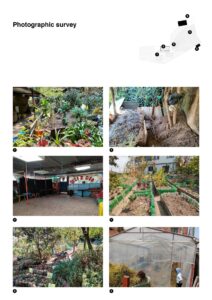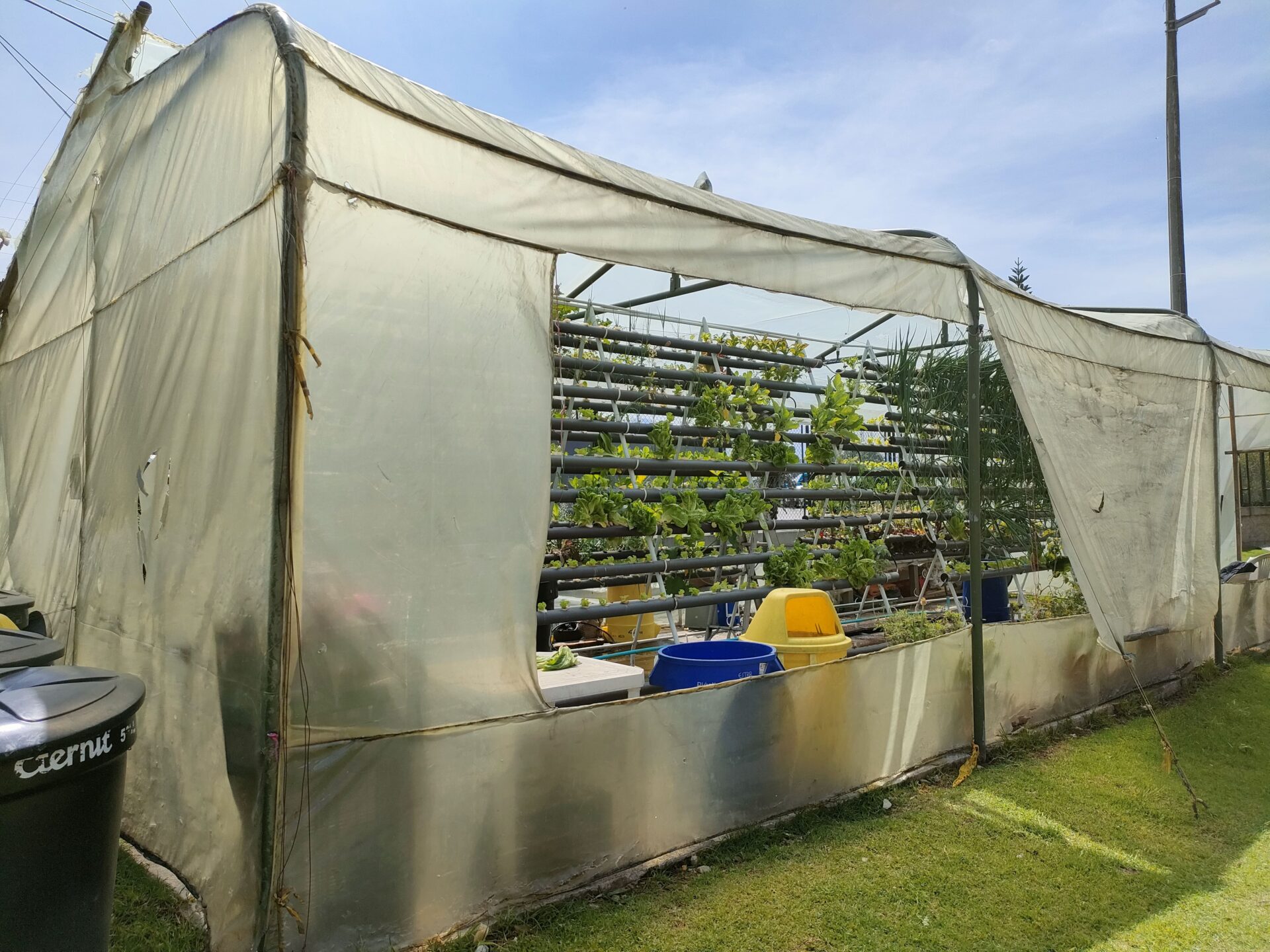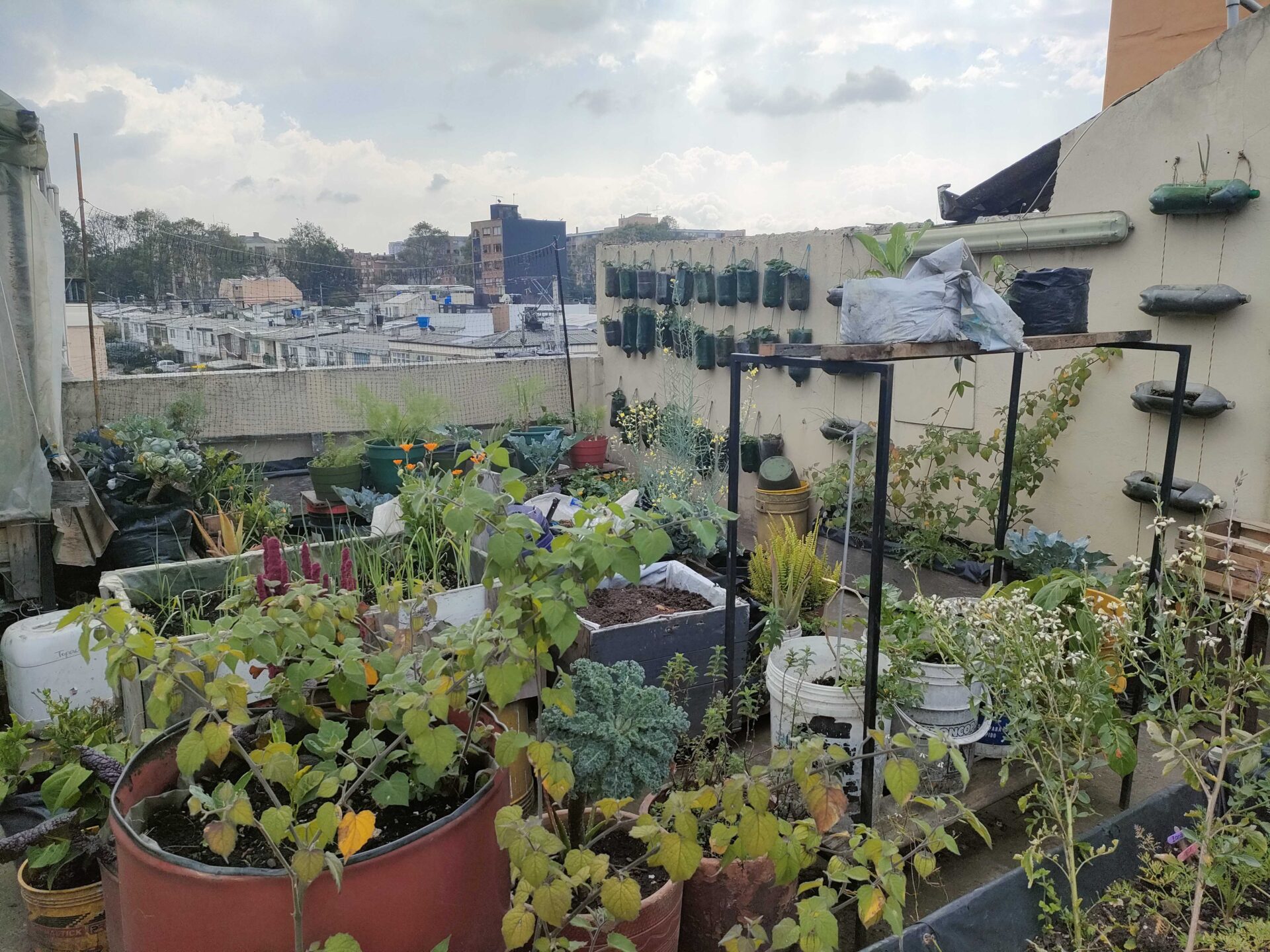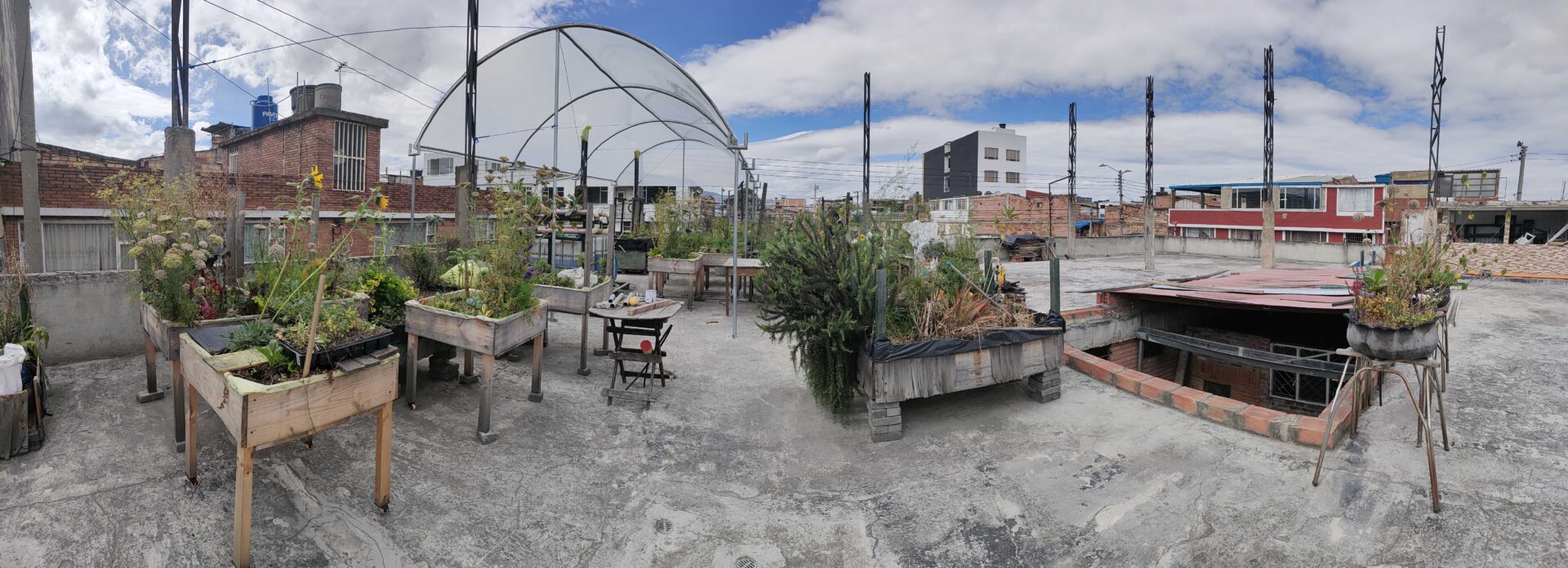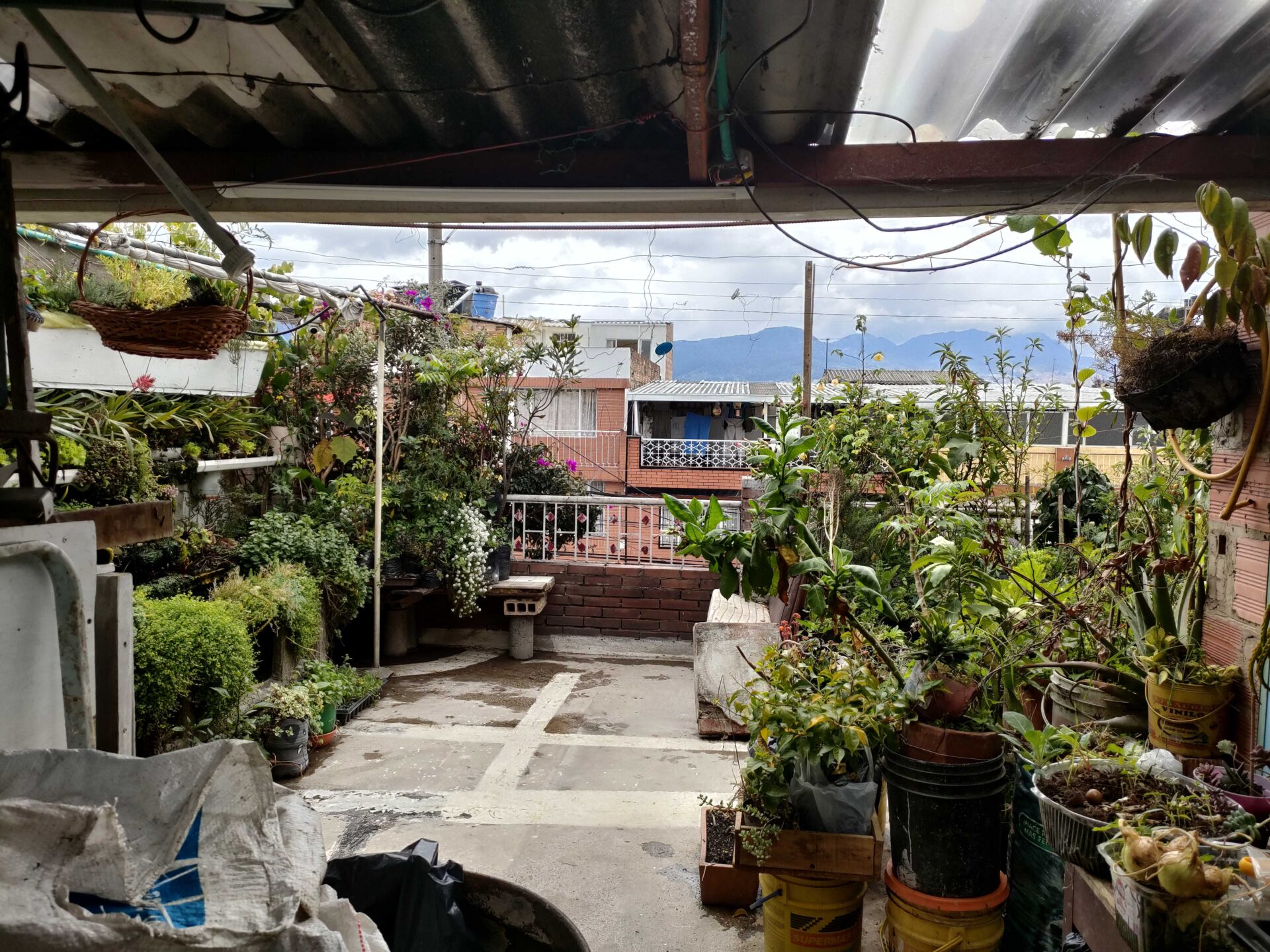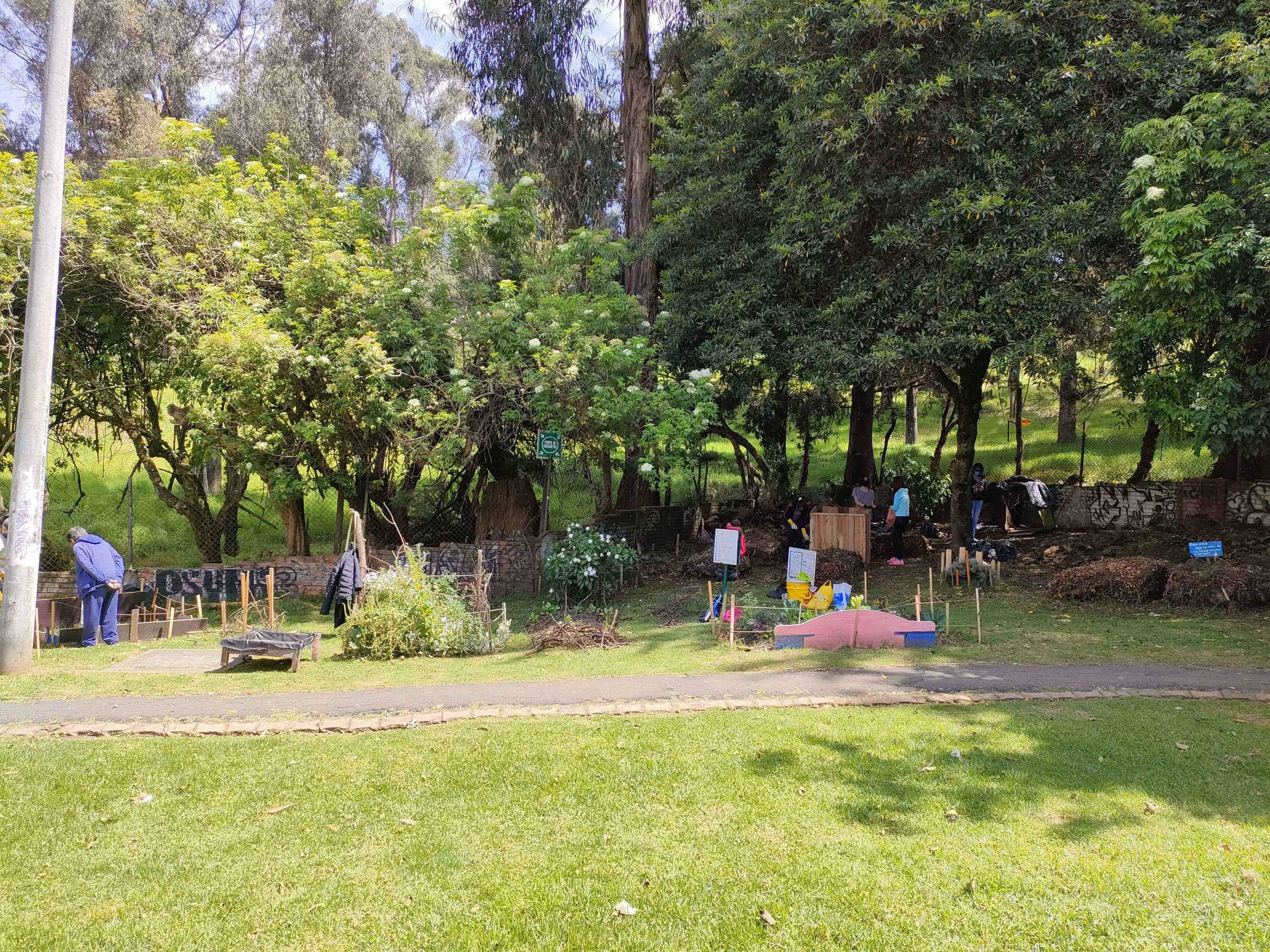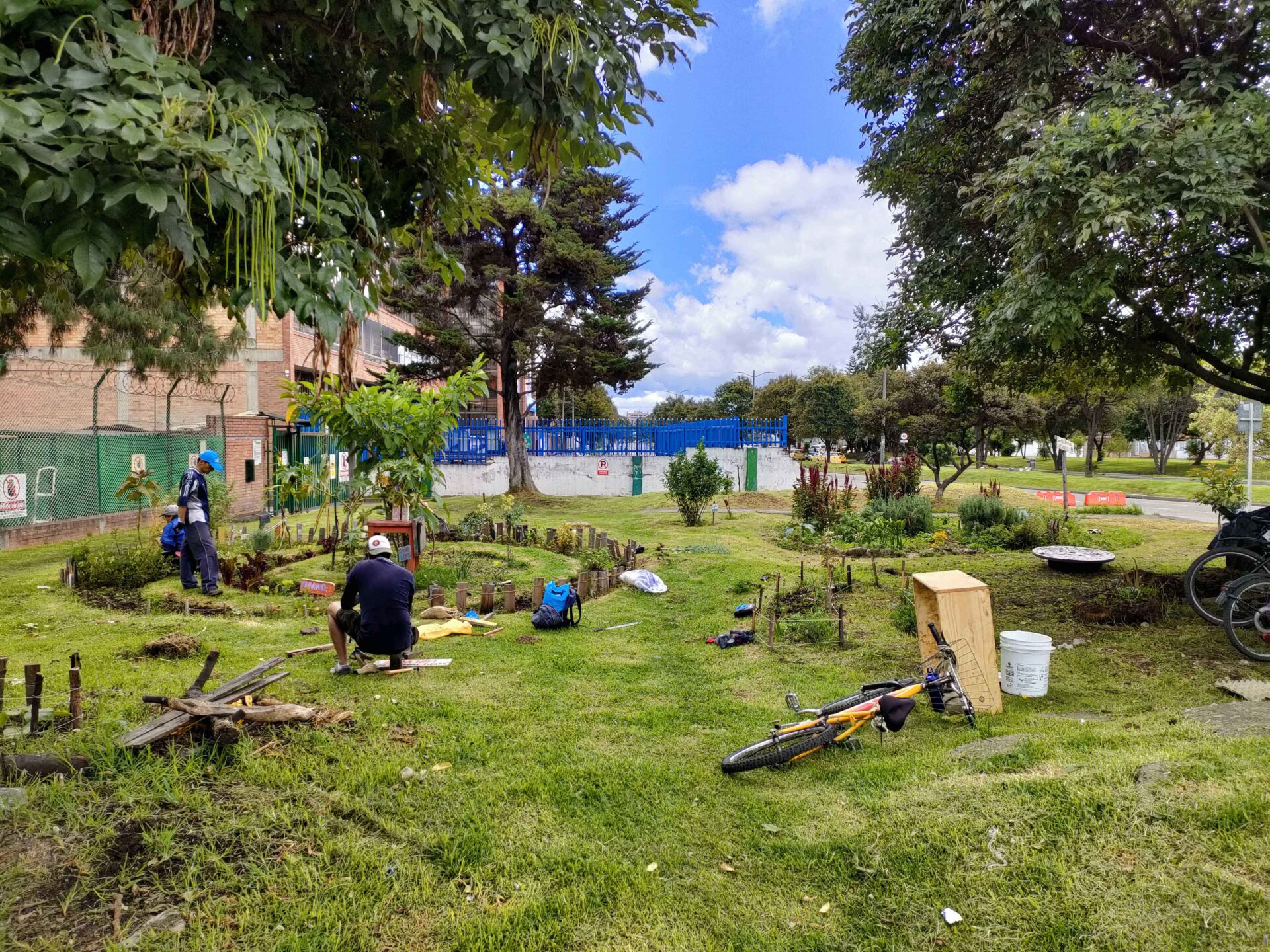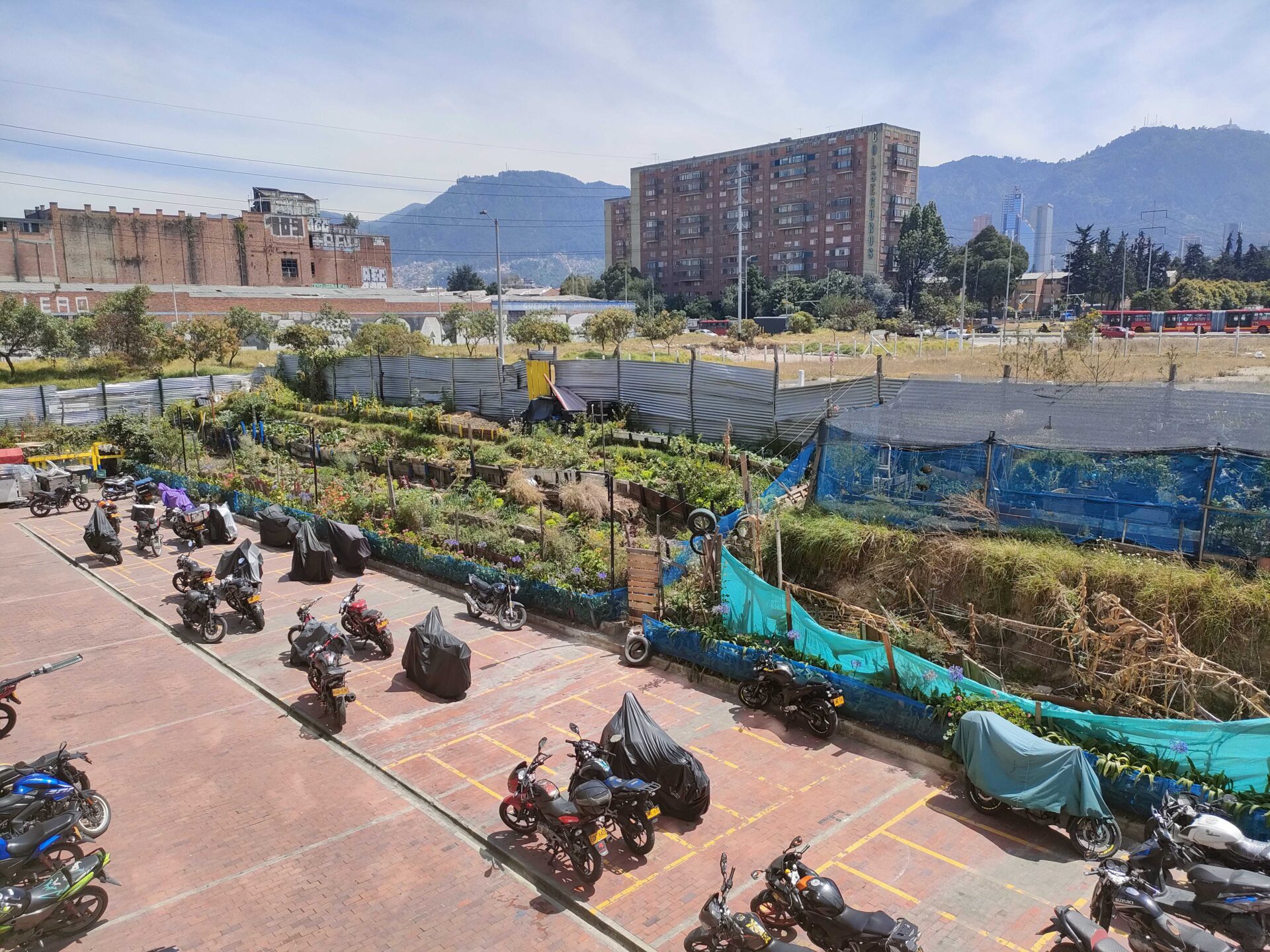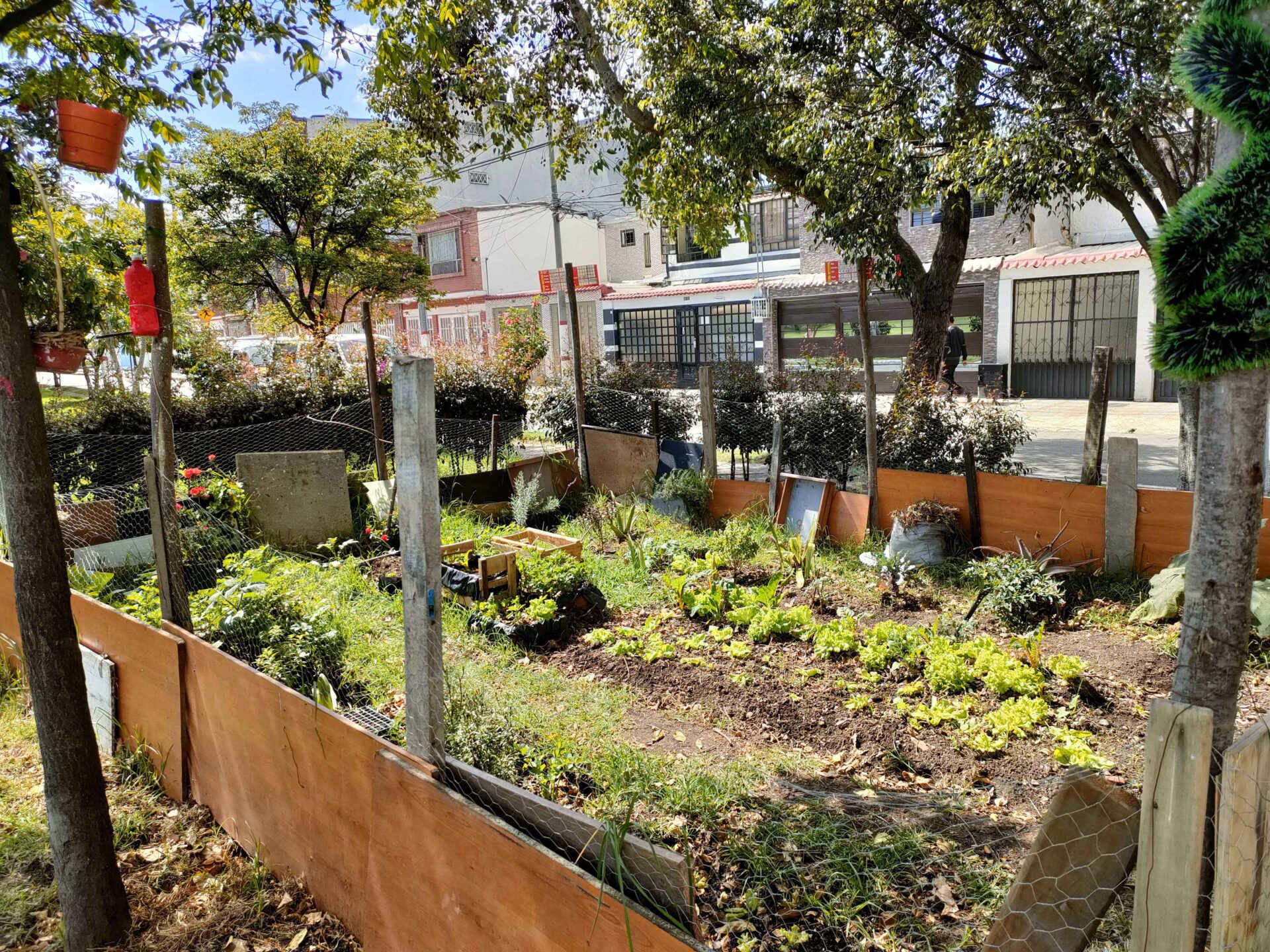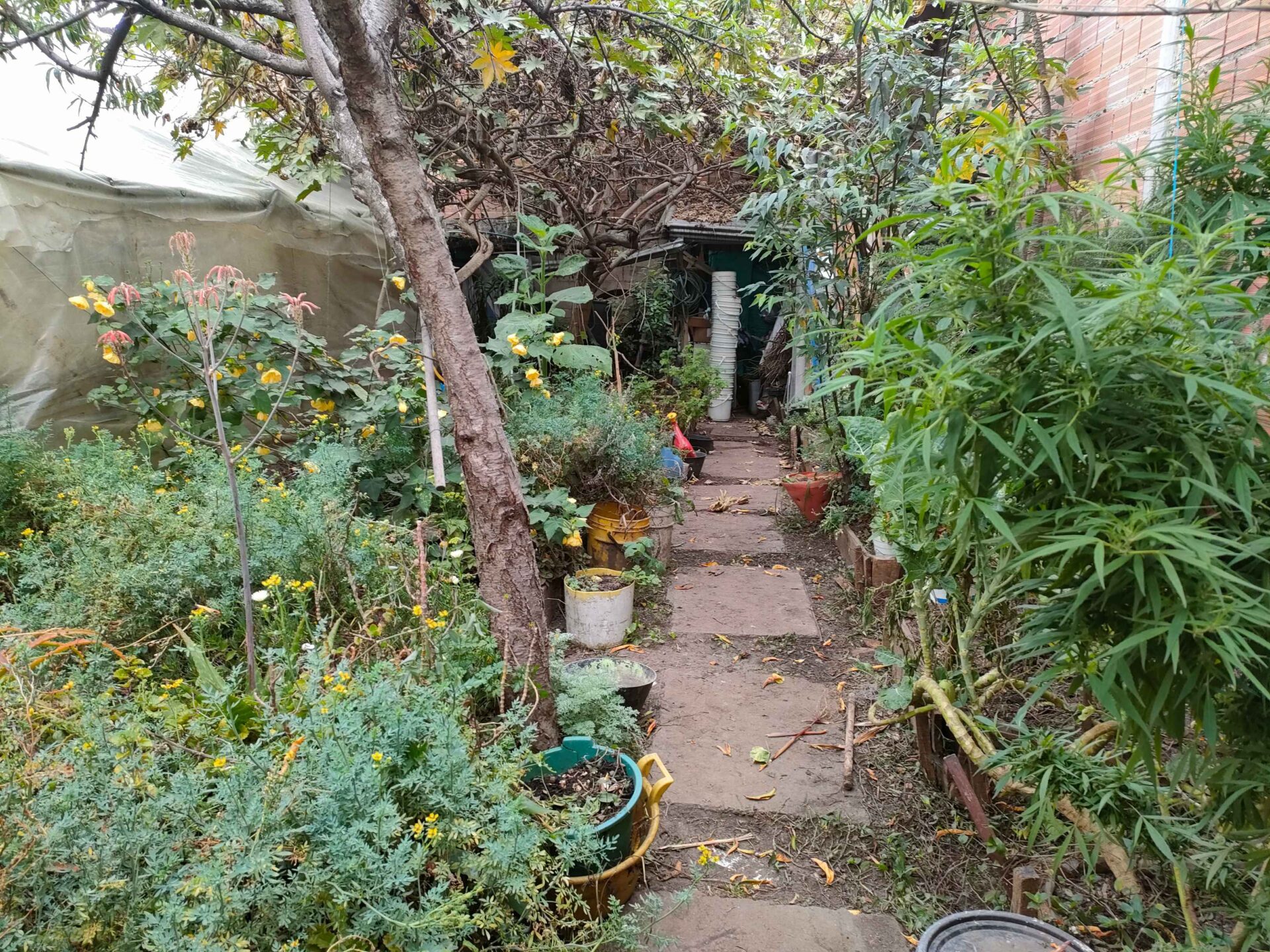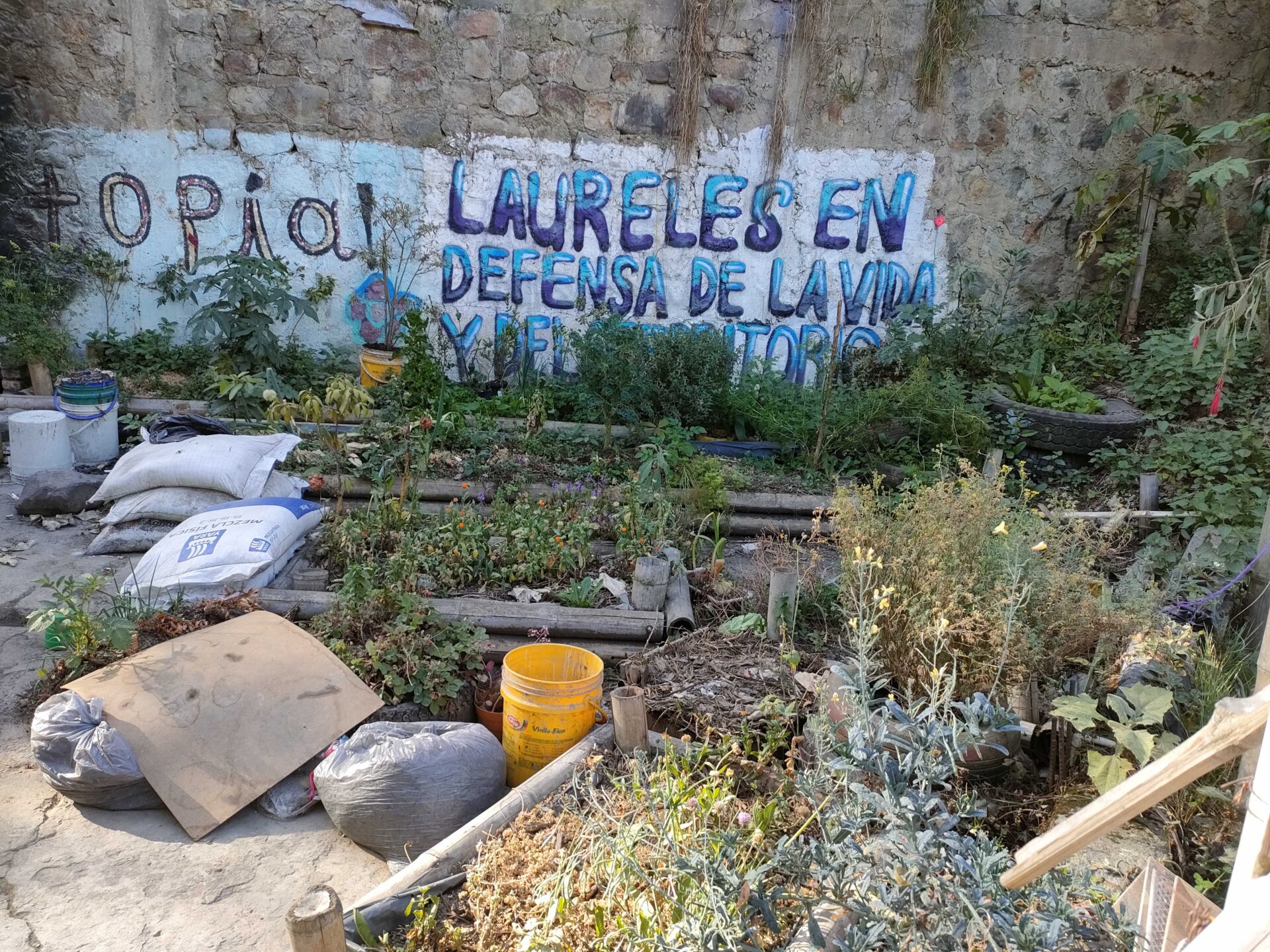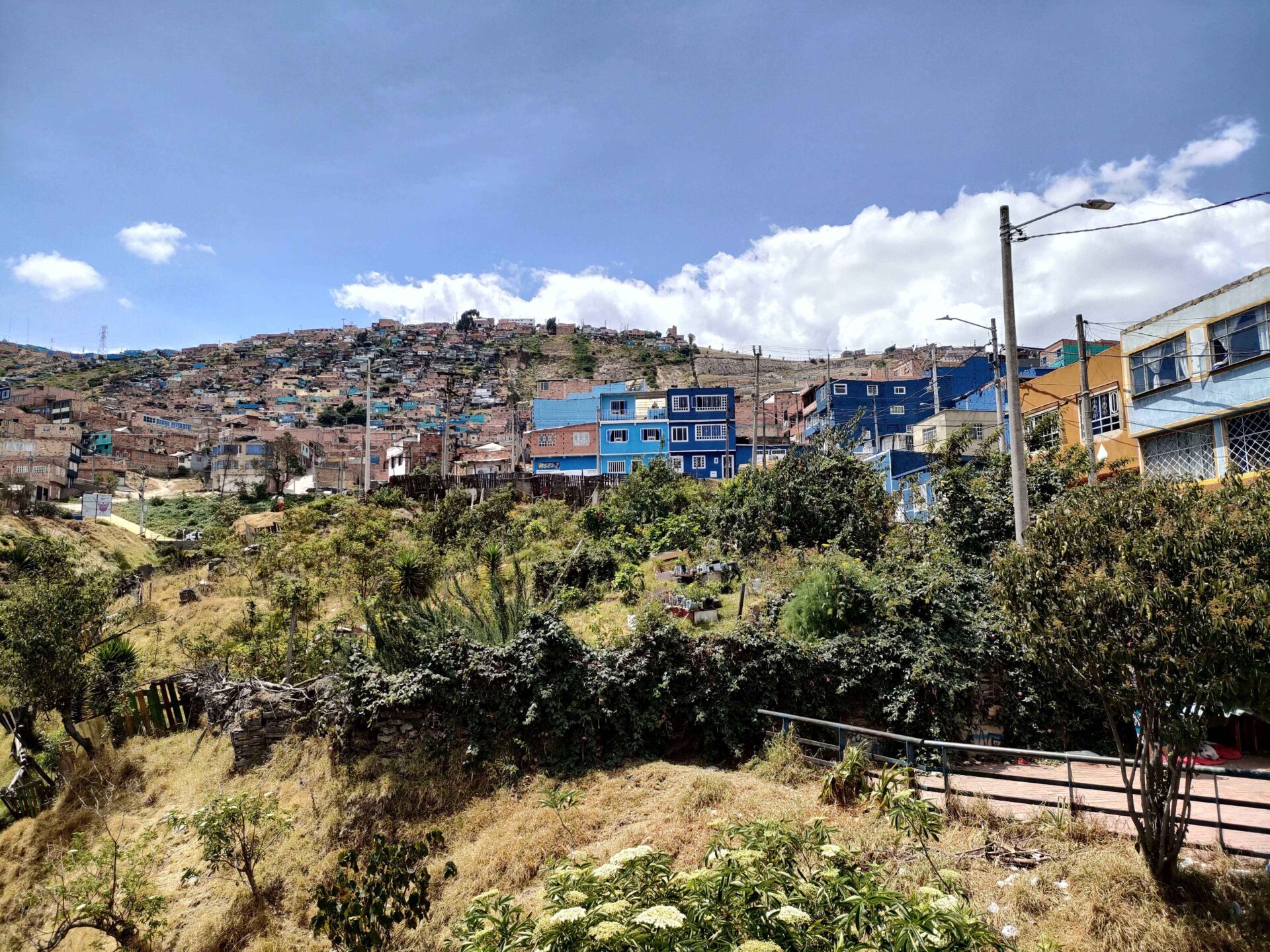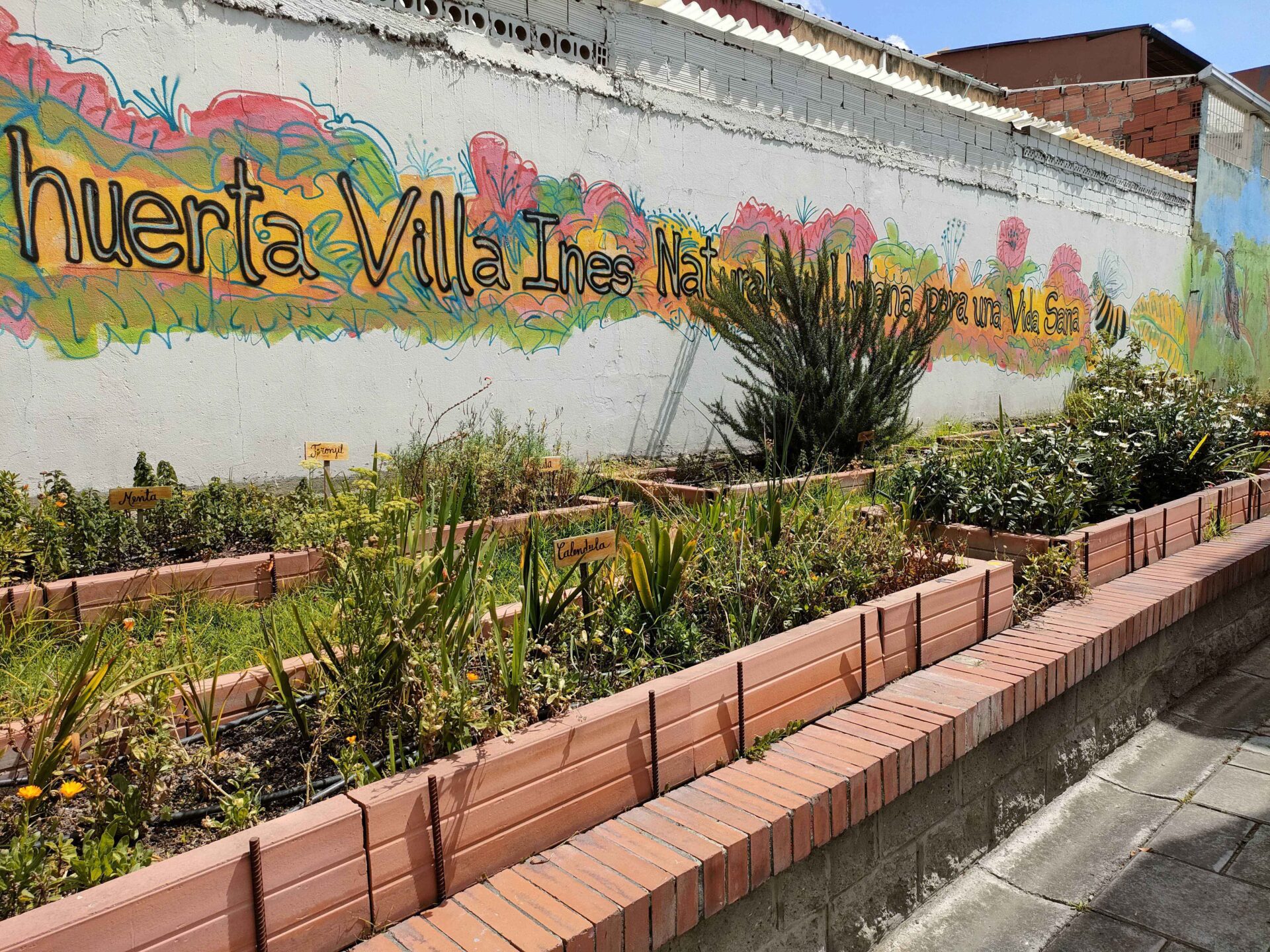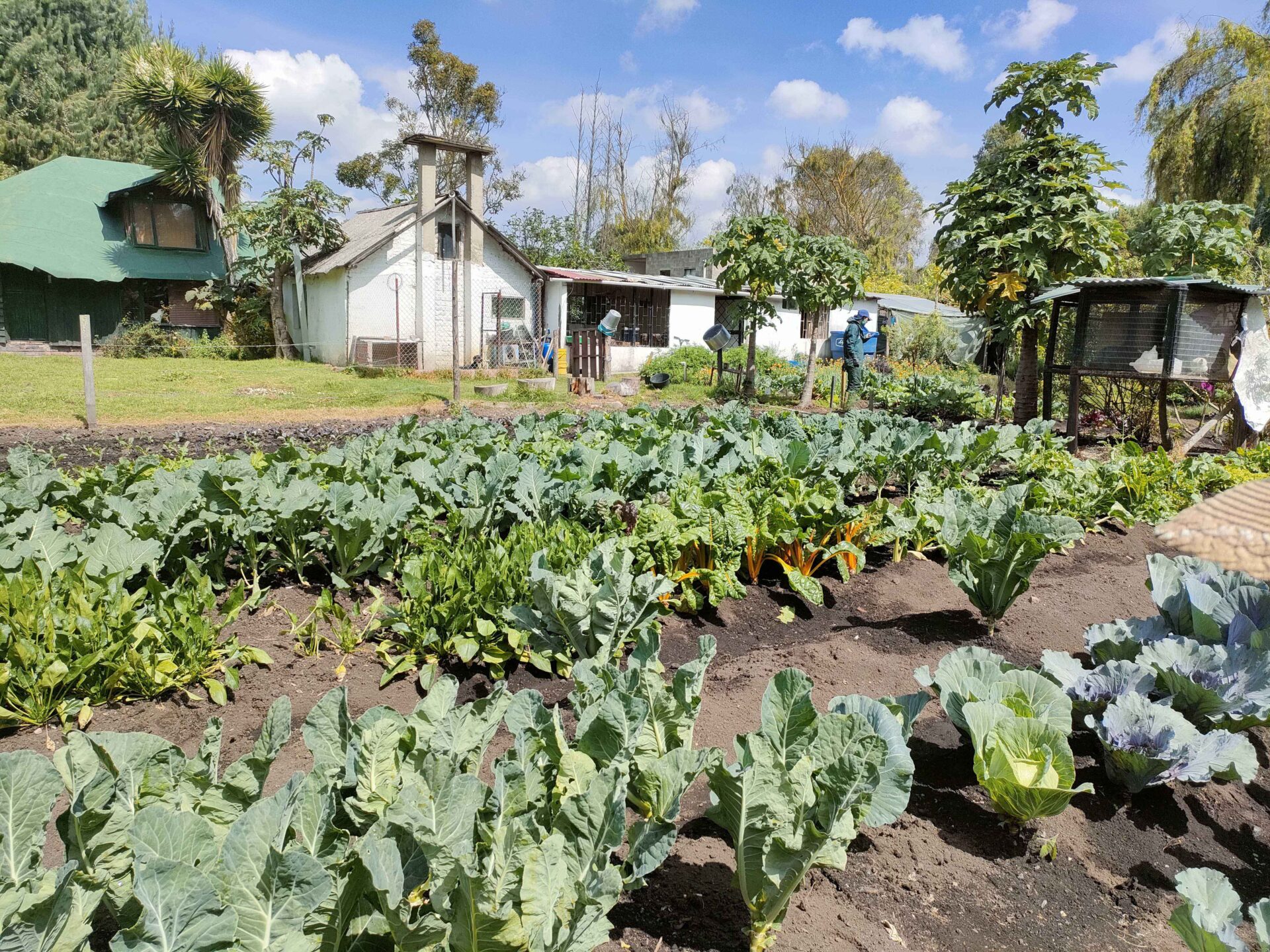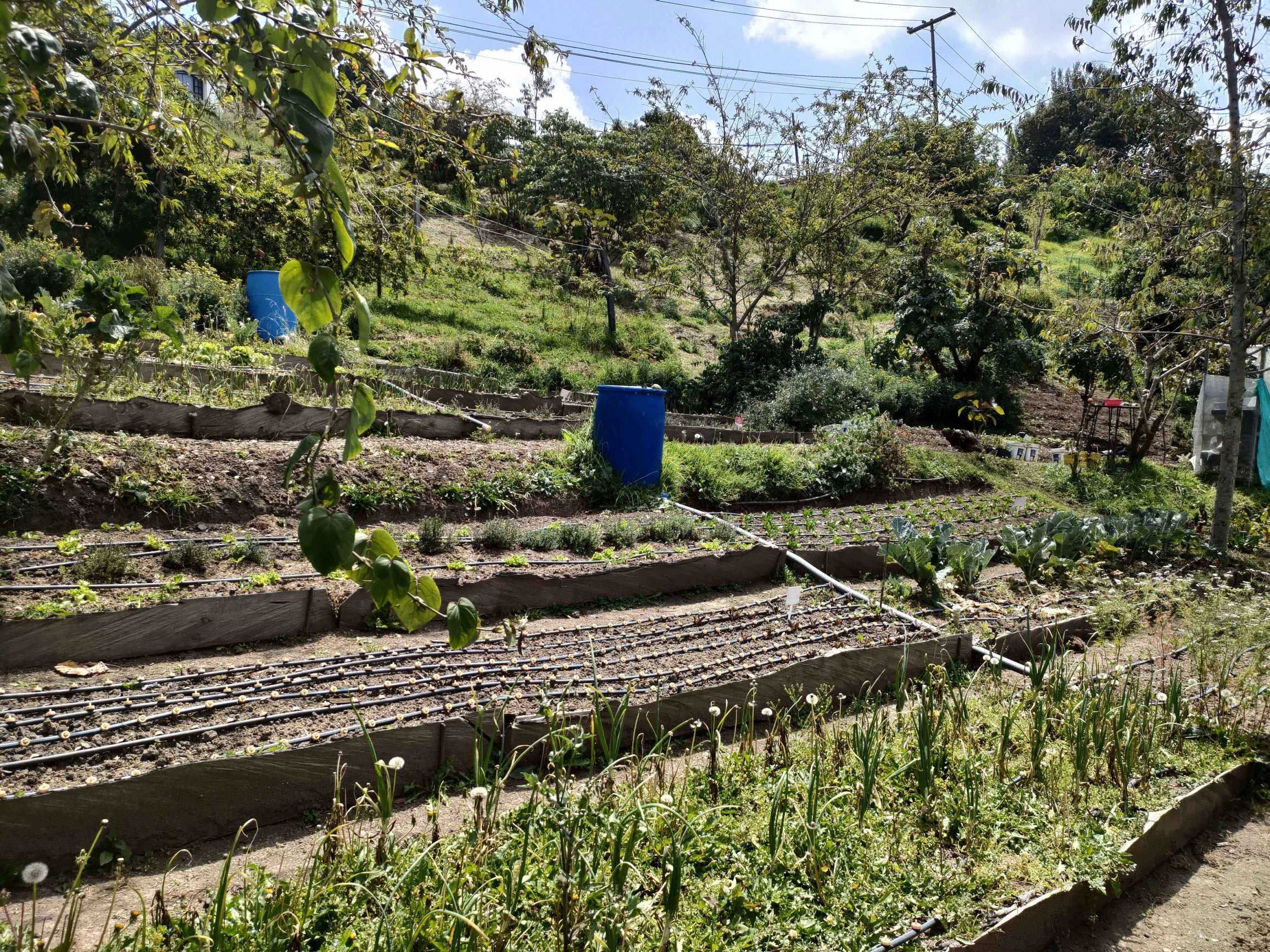The FEW meter_ Bogotá
Featured stories
Case studies
Guillermo started his hydroponic orchard in the premises of the local artisan market in 2017. His garden consists of 4 A frames split in two structures that hold 22 PVC tubes each. Each tube is 6 metres long and can host up until 33 plants. The 2 structures located under two canopies, each served by 3x 500 L reservoirs. The plants in these two structures are watered through the Nutrient Film Technique method, whereby plants are irrigated by a constant flux of enriched water circulated through the tubes that make this system. In an adjacent tent Guillermo also grows edible mushrooms through aeroponics. He then sells his produce to the local market and is willing to keep the prices of his produce low so that it remains affordable for his clients and his business gains momentum. This garden also fulfils a social purpose, as Guillermo committed himself to employ two collaborators with physical impairment; moreover, he regularly trains volunteers and receives visitors who want to learn about soil-less techniques.
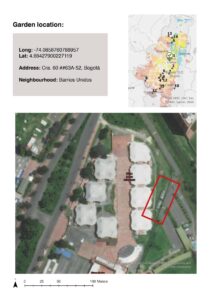
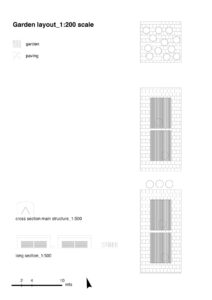
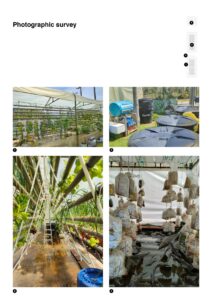
Huerta Mundo Verde Corazón Verde is a terrace garden of approximately 80 sqm located in the district of Chapinero. Mrs. Consuelo is a building administrator who was tired of looking at grey Eternit roofing from her terrace. It is for this reason that she decided to start growing plants on her rooftop with the aim of bringing back pollinators and birds in this area of the city. The L shaped space is covered in recipients of various shapes and dimensions, many of which are from repurposed waste, reaching a total of twenty-five raised beds located in the open-air terrace and the self-built green house.
Irrigation is done through rainwater harvesting, whereby the water gets collected and filtered in a tank in the communal ground floor garden from where it gets reconveyed to the terrace through an electric pump. Mrs. Consuelo is helped by a group of young architects who assisted her for the infrastructure of the terrace garden and the filtering system. They observe that one of the most important aspects for a successful harvest is sun exposure and add that there is not really a growing and dry season in the highland equatorial climate that characterises Bogotá.
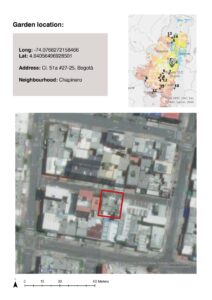
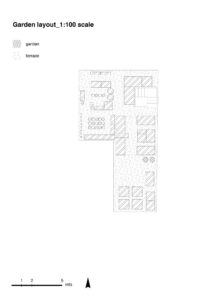
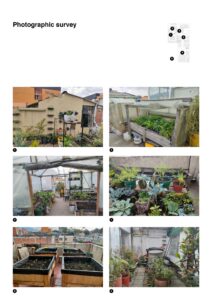
This garden is a workshop on the rooftop of the building for the Junta de Accion Comunal of the Barrio of Sant Eusebio. This open-air classroom was founded in 2016 and serves to educate the community on urban agriculture, food harvesting and promote sustainable lifestyles. This organisation is committed to change the common perception about local varieties of plants that are commonly regarded as basic staple for the lowest strata of the population by educating people about their use. It is worth noting that this organisation employs movable raised beds to accommodate the needs of its older participants;
The open-air classroom features:
– 24 raised beds (0.8×0.8 m)
– 5 larger raised beds (1×1.2m)
– 3 smaller raised beds (0.6×0.6 m)
– 6 tyre vases (0.6 m diameter)
– 2x 1 m3 water tanks used for aquaponics
– The area is covered by a canopy of 5×10 meters
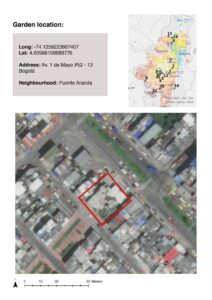
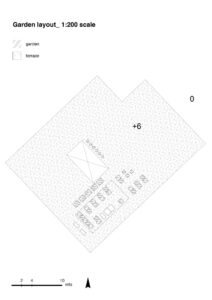
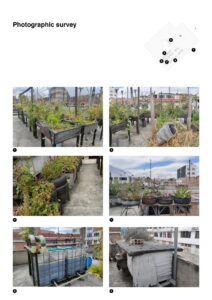
Huerta enverdesiendo is a home garden run by a couple (Diana and Ivan) that have converted several hard surfaces of their property into productive space throughout the years.
At the ground level, there are two in- soil allotments, one belongs to the property, the other is located on the sidewalk.
Reaching the top floor of the house we find a first terrace garden that features pottery and raised beds, an aquaponic fishpond and vermiculture.
The top roof hosts raised beds, a composter, a water tank that is refilled through the supply network and several bee-hives.
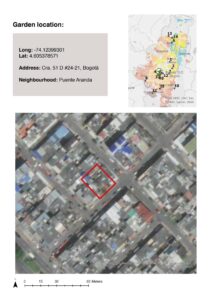
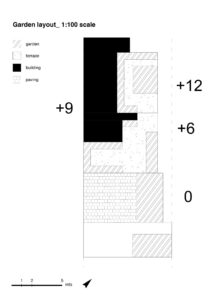
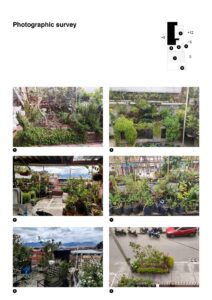
Huerta San Francisco was founded about a year ago thanks to the capacitation program of the Jardin Botanico de Bogota, after a group of local neighbours asked for a capacitation on the topic of food sovereignty.
The community garden “La huerta de mi barrio-parque San Francisco” serves as a collective open air learning experience for the whole neighbourhood. It is worth noting that although this space is not particularly productive in terms of food, it has a tremendous impact on the lifestyle of an entire neighbourhood, as its members replicate at home the sustainable farming practices they learnt together in the garden.
Although the yield of this space may be low from a conventional standpoint, this garden is highly productive with regards to food waste recycling, which is attained through the use of the “paca digestora Silva” method.
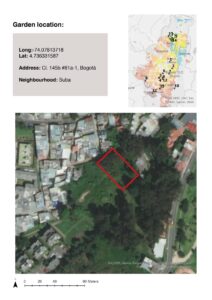
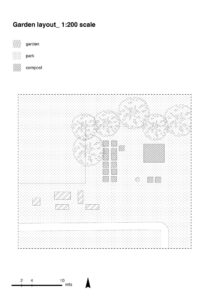
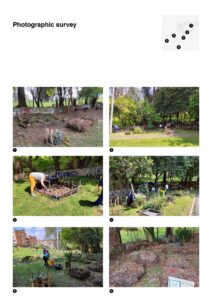
La Libélula is a community garden located in a public park in the Puente Aranda neighbourhood. It was created after a youth collective decided to recover the local park that was being used for illegal dumping and squatting. The group progressively cleaned out the area and begun experimenting with urban agriculture. At present time the site is composed of several circular plots where the main produce is herbs (aromaticas), a couple of areas with vermiculture and compost beds (paca digestoras). Watering is done manually through a small tank that the gardeners re-fill at the neighbouring carwash; in some cases the community members water the plants with water they carried from home; rainwater is also a source of irrigation, however it is not stored (hence cannot be measured).
There is no security in place for the garden, nevertheless it remains in good conditions and the manager noticed that in some occasions people planted something after they harvested under no supervision (that is the case of the avocado lining).
This garden doesn’t seem to contribute to the diet of the inhabitants in a significant way as the quantities harvested are too small; nevertheless two considerations need to be made:
– Herbs have a different use ratio than leafy vegetables, therefore what may seem like a small supply for standard vegetables is indeed quite substantial when considering aromaticas;
– Food here is a pretext for people to get together and form a community: as the manager pointed out, this neighbourhood has been subject to great immigration fluxes and people are looking for a way to create a community.
When asked about the social impacts of this garden, the manager mentioned:
– Social cohesion (see above)
– Individual wellbeing (sense of purpose for immigrants)
– Environmental education (kids learning about sustainable living)
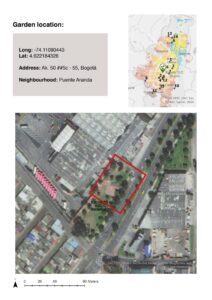
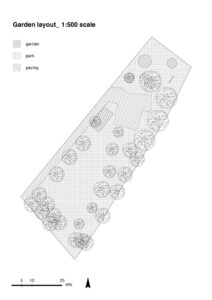
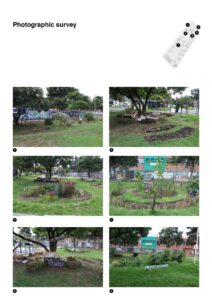
This community garden was started in 2015 on the rooftops of the housing estate “Plaza de la Hoja”, a social housing building hosting mainly people of rural heritage. Unfortunately, the garden had to be closed as the roof was not fitted to support this green infrastructure and generated some leakage. The idea of a community garden was taken up again at the beginning of the pandemic when some residents felt the need to acquire food sovereignty. The garden is managed by 4/5 volunteers and the food is shared among the residents of the estate (1kg per family). Watering is done through rainwater harvesting tanks and occasionally with water from the establishment during the dry season. The garden serves as a complementary support to the inhabitants’ diets and has become the catalyst for initiatives on environmental awareness and recycling. In particular, the garden is very active in composting food waste through the “paca digestora Silva” method.
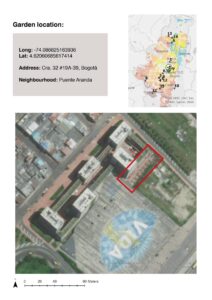
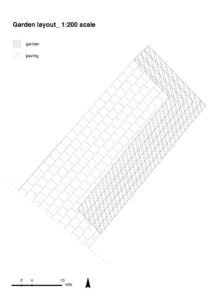
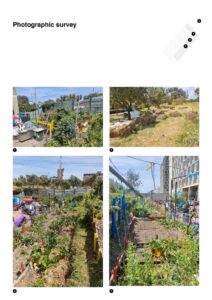
Huerta Santa Matilde was founded recently by the local neighbourhood committee that wanted to re-claim the public space in the local park. It is a small plot of 6 by 4.1 m cultivated with edible vegetables as well as aromatic herbs. The produce is divided between the participants who guard this garden through vigilance cameras that are part of the neighbourhood watch program.
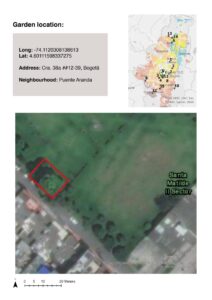
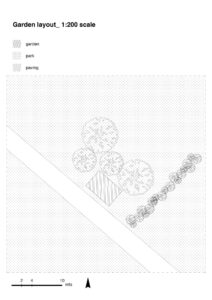
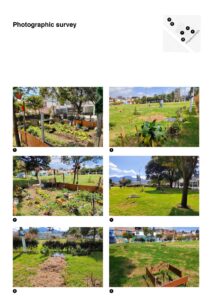
This educational space located at the side of a carwash in the barrio of La Estancia was created in 2012 by an old lady that wanted to strenghten her community with urban agriculture.
The garden has subsequently been taken up by various people and at the current time it is run by David, his fiancée and an elderly lady. The commitment of the community varies in time, that is why the garden has a fluctuating productivity. This space has both educational and productive purposes and is one of the few that re-sell their produce (jams and sauces); seed selection is also among the practices of this space.
The garden is composed by various areas that fulfil different functions:
– An educational space
– An open air garden
– A green house
– A composting area
– A vermiculture tank
– A recycling area (not currently in use)
– A food waste recycling system which consists of stacked filtering buckets
For what concerns energy supply, the neighbouring carwash guarantees the provision of water.
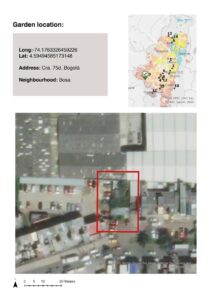
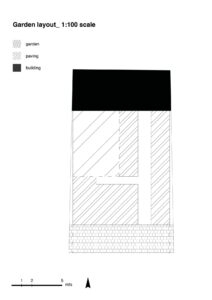
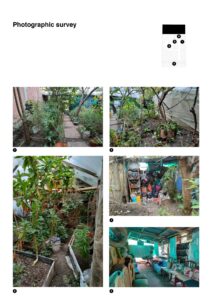
Jhody Sanchez and her parents moved in the Altofucha area in the neighbourhood of Laureles, within the district of San Cristobal, around 30 years ago after their bought their plot from who they thought to be the legal owners of the land. This proved not to be true and they, like many others, were considered illegal squatters that invaded the border of the city, in spite of purchasing the land. This area is now torn between a conflict between three sides:
– The city council, who claims that Jhody’s community is invading a natural reserve
– The “illegal” community of settlers
– Developers that have obtained authorization to build palaces as tall as 12 floors of height in the same area where the community of Altofucha currently resides.
This of course highlights the contradictory position of the city council when addressing stakeholders with different purchasing power.
In spite of its hardships, Jhody’s community decided to remain and claim their role as guardians of the Fucha river ( Muisca word for dancing woman);
this was the premise that led to the creation of the collective Huertopia, a group of residents who practices urban agriculture to sustain themselves and strengthen their community through the sharing of traditional knowledge, youth education activities and the pursuit of a eco-friendly lifestyle. The garden where this collective was born is located between a retaining wall and Jhody’s house. It has a triangular footprint and features several beds made of “guadua”, a local type of bamboo. Urban agriculture seems to be at times a pretext for this community to gather and consolidate itself through various forms of activism.
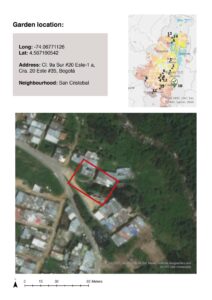
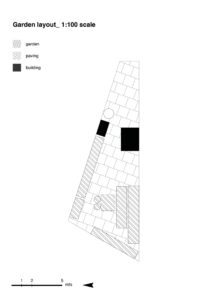
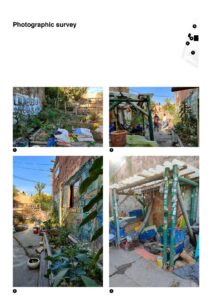
Mariela runs her garden in the neighbourhood of Manitas, in the southwest area of the city. She started her garden about 18 years ago to provide for herself and take care of the adjacent quebrada, a river canyon formation typical of the Bogotá area. Over the years she faced eviction threats from the local aqueduct authority, as quebradas are protected areas by Colombian environmental regulations. When it doesn’t rain, she waters her garden with water from her house, through a pipe that arrives directly in the garden. She uses plastic bags instead of vases as they get stolen by local recyclers.
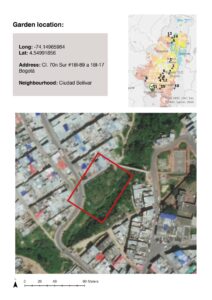
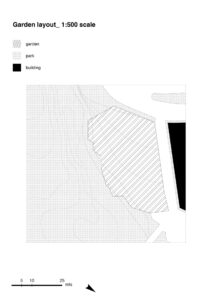
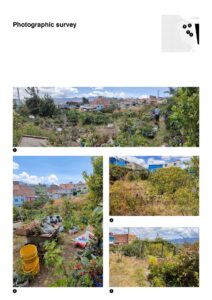
Huerta villa Ines is a community garden built within the premises of a multi-purpose municipal building in the neighbourhood of Puente Aranda. It comprises 22 beds of 0.8X 3.22 m plus a composter of 1 m3 that employs the “paca digestora” methodology. This methodology requires the compost to be tightly compacted in its crate, thus allowing anaerobic processes to take place and generating highly nutritious compost in 6 months. The garden also includes a tool shed with a vermiculture area (measures of shed: 2.10x 4.2 m) and a line of fruit trees (5.8x 1.5 m). Irrigation is delivered through three water collection tanks (3x 2000 litres each) that feed into a roof reservoir (1 x 1000 litres) from where the irrigation network spans. The produce of the garden is divided between the participants, a group of elderly ladies from the surrounding area. The garden has been supported by the Bogotá Botanical Garden through the provision of compost and specialised training.
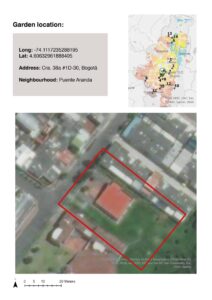
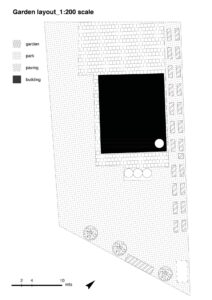
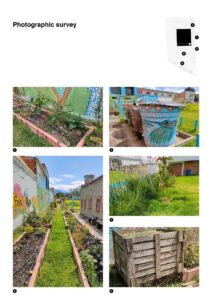
Maria Isabel used to have a bar nearby her current house and farm, but was tired of dealing with drunk customers, hence she decided to turn to urban agriculture to provide for her family; soon she was able to produce more than she needed and decided to turn her activity into a business. She was supported in her choice by her landlord, with whom she divides her profits 50/50. She has also been endorsed in this process by the Bogotá Botanical Garden, who provided her with some helpers. In her orchard of about 600 sqm Maria Isabel grows leafy greens, fruit trees, medicinal herbs, various kinds of potatoes and cabbages, she keeps rabbits, chickens, cows and geese and has a water reservoir that supplies the whole area.
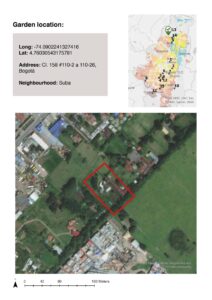
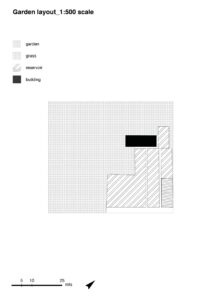
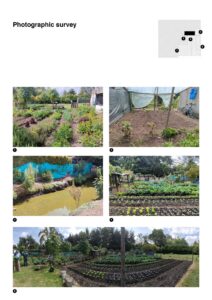
Johnny is a former environmental technician who left his stressful job to dedicate himself to agriculture which he finds more rewarding and satisfying. Johnny and his father started their garden in the terrain facing their house about 2 years ago. The site has an area of 5000 sqm, and crops vary from fruit trees to herbs and leafy greens. This urban farm also breeds various animals, such as chickens, geese, cows, bees. Irrigation is done through rainwater harvesting and Johnny has been meticulous about forecasting his water consumption and consequently customised the amount of used water.
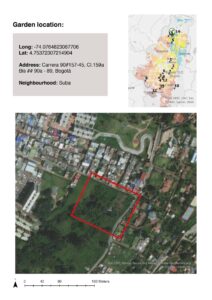
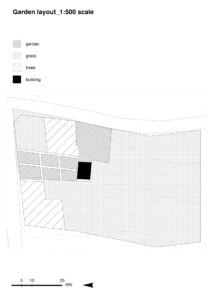
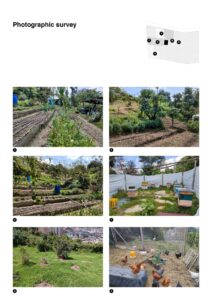
Huerta As.Chircales was born 15 years ago, when the city council of Bogotá outlawed brick making through kilns for environmental and geological reasons. Alex’s family had been involved in this activity for generations and after the law was passed, they decided to turn the kiln site near their house into a garden; the initial intent was to create a beautiful space with ornamental plants, but the orchard quickly started producing enough to support Alex’s family of six. As years passed by, the garden became more and more a reference point for the whole neighbourhood; Alex’s family decided to create an association for the promotion and development of former kiln sites and currently their garden hosts a program featuring the following activities: crèche, educational gardening, recycling, food waste transformation, community events, animal husbandry, cooking.
